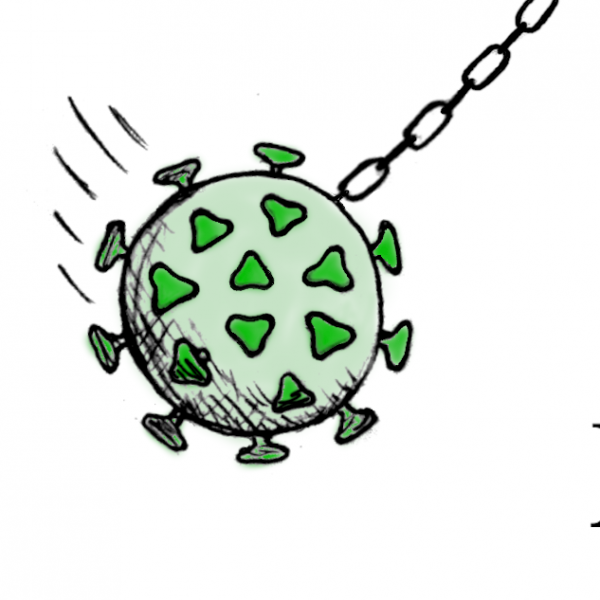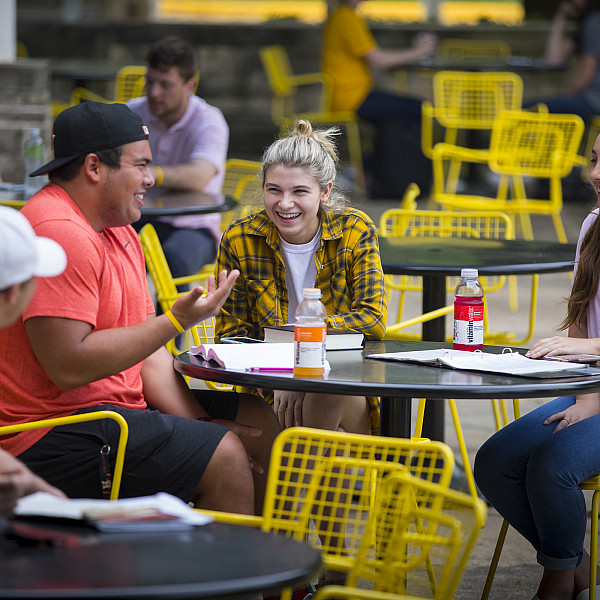News
It’s Just Not the Same, Part 1
May 07, 2020
May 07, 2020
Open gallery

It might seem like decades ago now, but on March 12, 2020, Southwestern University administrators announced that in order to safeguard the health of our community from the ever-spreading COVID-19, students and faculty would not be returning after an extended two-week spring break; instead, SU would transition to at-home education until at least April 9. Just one week later, as the virus and disease began to make their way through Williamson County, Interim President Dale Knobel notified the entire university community that they would not be resuming after the Good Friday holiday after all; instead, the residence halls would close within days, and classes would go online for the rest of the semester.
In effect, our residential campus, which prides itself on dynamic small classes, face-to-face learning, and a warm and supportive atmosphere, would spend the final six weeks of spring 2020 apart. And the Southwestern faculty, most of whom had never previously trained to teach remotely, were suddenly called on to move their labs, seminars, capstones, and studio courses online.
Now, if you’re familiar with e-learning, you know that it’s a different field with a different kind of pedagogy and therefore requires a different set of tools and skills. It often takes years of education and training to master those resources and techniques, just like it does for K–12 teachers and college faculty preparing to teach in brick-and-mortar classrooms. There are even master’s and doctoral programs devoted to e-learning and instructional design.
Nevertheless, circumstances required that SU faculty make the switch … in a mere fortnight.
“The faculty’s efforts to adjust their pedagogies to fit a remote-learning model in two weeks’ time were truly Herculean in nature,” says Alisa Gaunder, dean of the faculty and professor of political science. “I am proud to say that our faculty have risen to the challenge.”
A makeshift Hogwarts for ed-tech newbies
To support the faculty during the transition, Julie Sievers, director—and sole staff member—of the Center for Teaching, Learning, and Scholarship (CTLS), partnered closely with Melanie Hoag, the school’s sole instructional technologist, to host a number of programs and produce myriad resources, including a robust website of curated resources, a series of remote-teaching workshops (with a whopping 25 workshops on 10 different topics during the two weeks of spring break alone), and a collaborative Moodle site where faculty could share resources and ideas. Sievers and Hoag also developed a guide for students on how to use educational technology and conducted surveys so that professors could plan around difficulties that might interfere with students’ learning, such as limited access to technology or family obligations.
Participation in the workshops was high: approximately 124 faculty and 10 staff attended, discussing strategies for using the platforms supported by the university, which include Moodle, Google Hangouts and Meet, and RingCentral–Zoom. But that impressive array of faculty-development training sessions and resources had to be built from scratch—itself a complicated and formidable task that has demanded many long hours each day during the past several weeks.
“It’s been challenging,” admits Julie Sievers. “As the director of the Center for Teaching, Learning, and Scholarship, I aim to keep up with current and emerging pedagogies and the research about them. That includes having some familiarity with digital pedagogies, and I do experiment with digital tools quite a bit in my own teaching… . But educational technology is still not my primary area of focus or expertise, and so helping lead our pivot to remote teaching has required me to rapidly learn about a variety of teaching approaches and tools.” Sievers adds that at many colleges and universities, an entire department specializing in educational technology will provide expertise for that institution. “But [Southwestern has] only one staff member whose work focuses on instructional technology: Melanie Hoag. She’s been amazing, and we have worked very closely together. But I’ve had to be a lot more involved in the ed-tech side of things than I normally would be. It’s certainly been a learning experience.”
Knowing that so many faculty would need help and without a devoted instructional technology department, Sievers and Hoag assembled an ad hoc ed-tech team—or what the pair fondly refer to as their Ed-Tech Wizards: Hal Hoeppner, an institutional research analyst who moderated workshops and provided the bulk of responses to faculty support requests; Kelly Lessard, Susie Bullock, Kat Garza, and Laura Polanco, all administrative assistants from across campus; Theresa Zelasko, an outreach and information-literacy librarian, and Katherine Hooker, a research and instruction librarian; and Cameron Henkel and Claire Harding, both student assistants who work for Hoag. Even though the team had little prior experience with educational technology, Sievers says, they’ve learned on the fly and responded promptly to faculty SOSes via email, video chat, or phone call. “They’ve been incredibly helpful, and we could not have kept on top of this workflow without them,” Sievers adds gratefully.
“It has been and continues to be quite a journey, ranging from challenging to exciting to overwhelming to thankful!” Hoag agrees. “I could not have a better partner than Julie, working together in collaboration to provide the resources to best equip our faculty to quickly move their teaching, class materials, and interactions with their students online. When I look back to the first meeting we had on March 9th to today, six weeks later, of which the last three have been online classes, it’s been amazing what our faculty, students, and the staff who support them have done and continue to do.”
In part 2 of this series, faculty will share their perspectives on SU’s transition to remote learning.


















